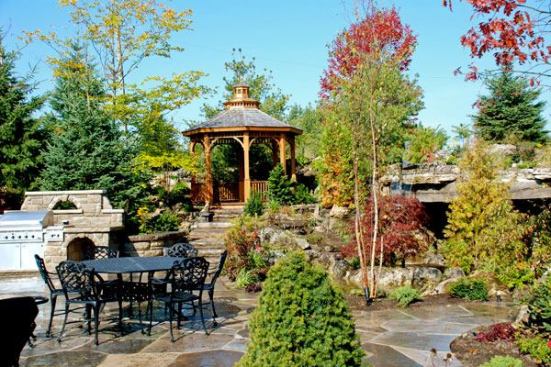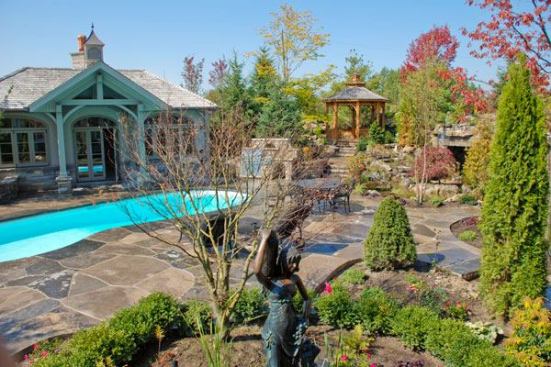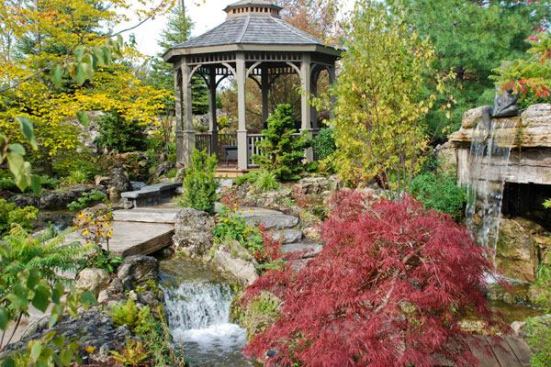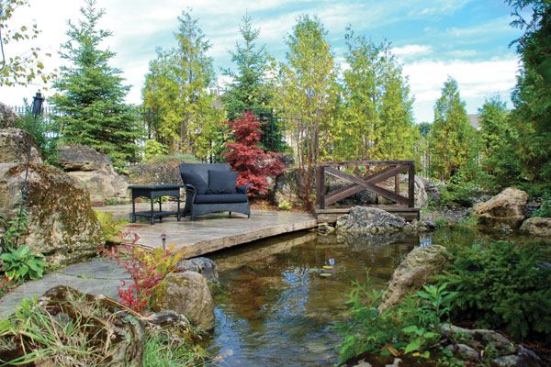TUMBER & ASSOCIATES
Small plants and ground cover: the tapestry effect
Here, you can see how I’ve repeated the use of a plant for depth perception. I placed fuchsia Flower Carpet Roses in the foreground as well as across the walkway. This weaves the same elements through the area to help create a harmonious composition.
We often use Carpet Roses for color. They arrived on the market in 1995 after decades of breeding, and are disease tolerant, easy to maintain, and bloom literally non-stop from early spring until there’s snow on the leaves and blooms. A well-established Flower Carpet Rose can have 40 to 60 blossoms on it at one time. However, while they’re great in a garden, these plants don’t look like anything found in the forest, so we walk a fine line when using them. The farther you go from the obviously manmade pool area, the more natural the plants must be to blend with the increasingly woodsy environment.
We also used three Japanese Garden Junipers (foreground, right side). This plant requires almost no maintenance and is great for ground cover, with a slightly mounding growth habit and nice texture. It’s another evergreen, and although slow-growing, it can reach more than 10 feet.





